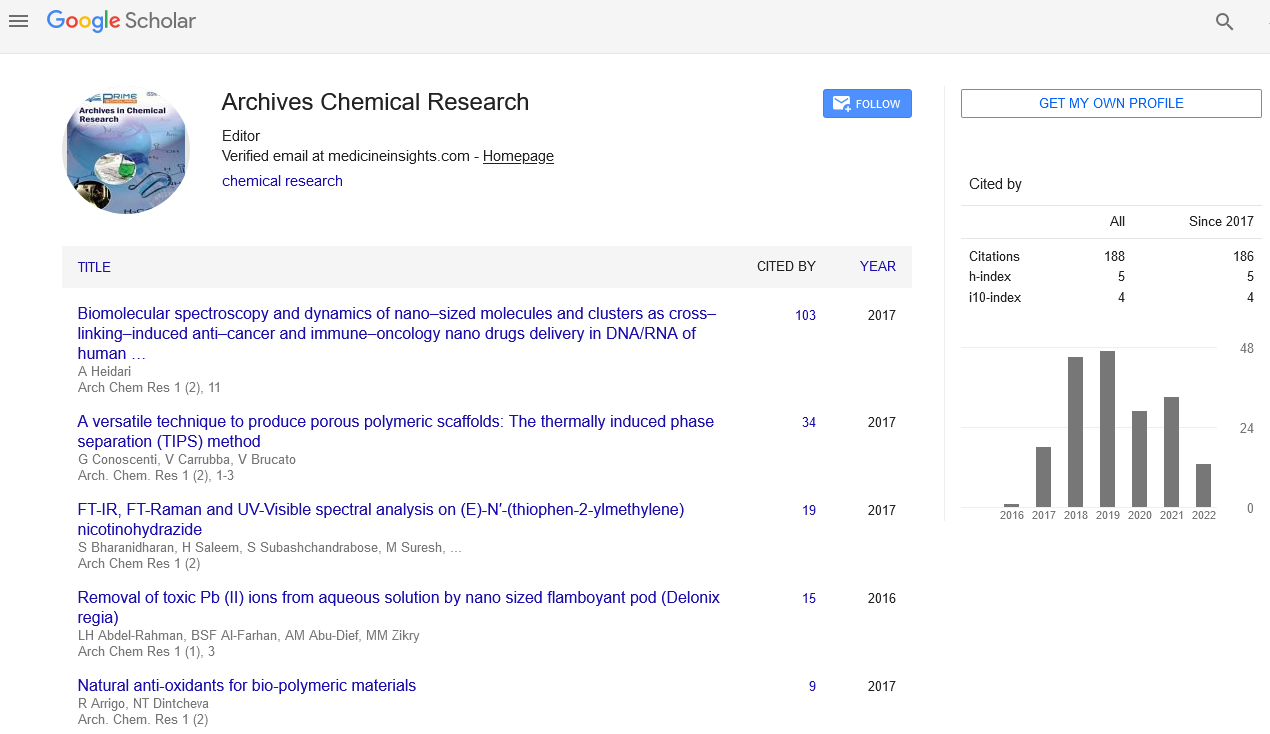Commentary - (2024) Volume 8, Issue 2
The Transformative Power of Nanotechnology in the Modern World
Ruby Hill*
Department of Organic Chemistry, Chichester University, United Kingdom
*Correspondence:
Ruby Hill,
Department of Organic Chemistry, Chichester University,
United Kingdom,
Email:
Received: 29-May-2024, Manuscript No. IPACRH-24-20309;
Editor assigned: 31-May-2024, Pre QC No. IPACRH-24-20309 (PQ);
Reviewed: 14-Jun-2024, QC No. IPACRH-24-20309;
Revised: 19-Jun-2024, Manuscript No. IPACRH-24-20309 (R);
Published:
26-Jun-2024, DOI: 10.35841/2572-4657.8.2.16
Description
Nanotechnology, the science and engineering of manipulating
matter at the atomic and molecular scale, represents a
revolutionary field with the potential to change the way we
live and interact with the world. By working at the nanometre
scale-one billionth of meter scientists can design materials and
devices with new and enhanced properties. This article delves
into the foundations of nanotechnology, its diverse applications,
and the challenges and future prospects of this cutting-edge
discipline. Nanotechnology is fundamentally about controlling
and exploiting the unique physical, chemical, and biological
properties that emerge at the nanoscale. The field is inherently
interdisciplinary, drawing from physics, chemistry, biology, and
engineering to create structures, devices, and systems with
novel functionalities. At the nanoscale, materials often exhibit
properties significantly different from their bulk counterparts.
These can include increased strength, lighter weight, higher
electrical conductivity, and enhanced chemical reactivity.
Developing nanotechnology requires advanced tools and
techniques for observing and manipulating matter at the atomic
level. Key methods include Scanning Tunnelling Microscopy
(STM), Atomic Force Microscopy (AFM), and electron
microscopy, which provide the ability to visualize and modify
nanoscale structures. Techniques for fabricating nanomaterials
include top-down approaches, such as lithography, which
carve nanoscale patterns from larger structures, and bottomup
approaches, such as chemical vapour deposition and
molecular self-assembly, which build structures atom-byatom
or molecule-by-molecule. Nanotechnology’s potential
to revolutionize various sectors stems from its ability to create
materials and devices with superior properties and new
functionalities. In the medical field, nanotechnology enables
targeted drug delivery systems, which can deliver medication
directly to diseased cells, minimizing side effects and improving
efficacy. Nanoparticles are also used in imaging for early
diagnosis of diseases and in developing new therapeutic
techniques, such as photo thermal therapy for cancer. The
miniaturization of electronic components is a major driver of
nanotechnology in the electronics industry. Nanotechnology
has led to the development of faster, smaller, and more efficient
transistors and memory storage devices. Quantum dots and
carbon nanotubes are being explored for next-generation
displays and flexible electronics. Nanotechnology plays a
critical role in advancing energy technologies. This includes
the development of more efficient solar cells, better energy
storage systems such as batteries and super capacitors, and
improved catalysts for fuel cells. Nanomaterials can enhance
the performance and longevity of these energy systems.
Nanotechnology offers solutions for environmental challenges
by providing materials and methods for pollution control and
remediation. Nanoparticles can be used to clean up oil spills,
remove pollutants from water, and capture greenhouse gases
from industrial emissions. Nanomaterials are engineered
to have exceptional properties, such as high strength, light
weight, and resistance to corrosion. These materials are used
in a variety of applications, from aerospace to construction.
For example, nanocomposites are used to make lighter and
stronger aircraft components, while Nano coatings can provide
surfaces with self-cleaning or antibacterial properties. While
nanotechnology holds tremendous promise, it also faces
several challenges that must be addressed to fully realize its
potential. The small size and high reactivity of nanomaterials
raise concerns about their potential impact on human health
and the environment. Research is ongoing to understand the
toxicity and ecological effects of nanomaterials and to develop
guidelines for their safe use. Producing nanomaterials and
devices on a large scale in a cost-effective manner remains a
significant challenge. Advances in manufacturing techniques
are needed to transition from laboratory-scale production to
industrial-scale applications.
Acknowledgement
None.
Conflict Of Interest
The author’s declared that they have no conflict of interest.
Citation: Hill R (2024) The Transformative Power of Nanotechnology in the Modern World. Arch Chem Res. 8:16.
Copyright: © 2024 Hill R. This is an open-access article distributed under the terms of the Creative Commons Attribution License, which permits unrestricted use, distribution, and reproduction in any medium, provided the original author and source are credited.

